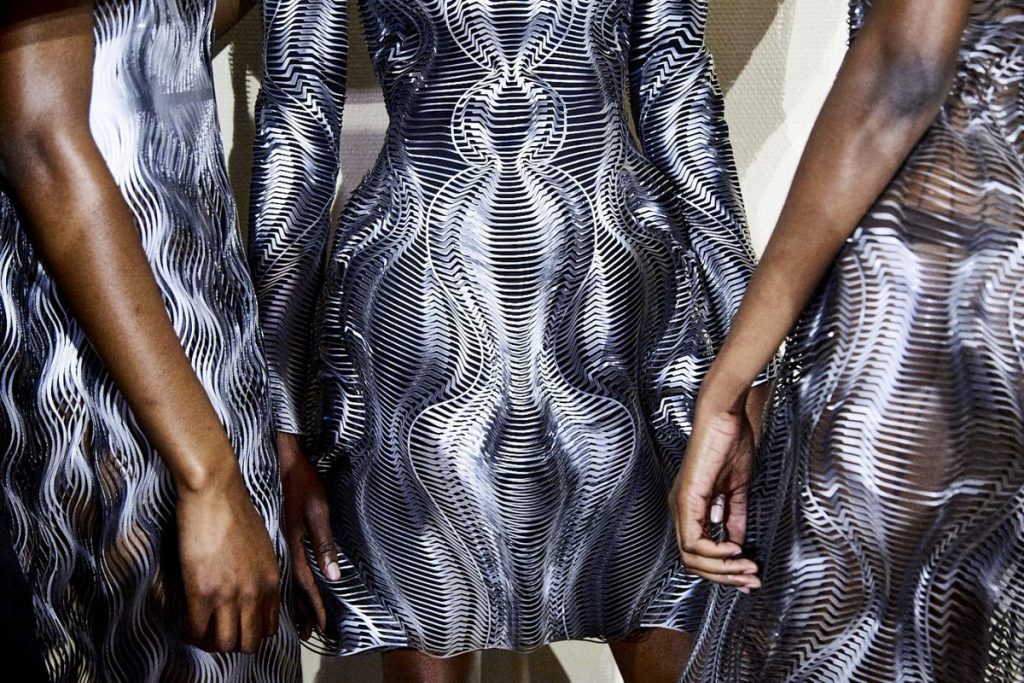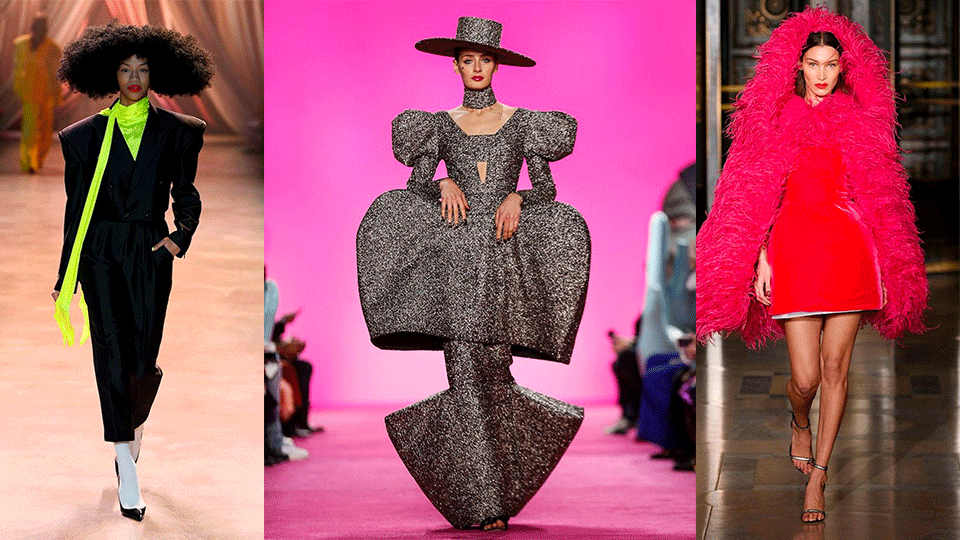- À New Wave to Fashion, À New Way of Living. Download Now on iOS Android Canada SS22
- hello@alahausse.ca
GMO Chic: Should we Genetically Modify Fashion?

Is Polyester a Sustainable Option?
February 10, 2022
The Future of Circular Fashion on Mars
February 24, 2022
Written by: Dylan Stoll
Genetically modified organisms (GMO’s) have been around since the 80’s, permeating a great variety of industrial sectors in more than one way. We’ve seen GMO’s used to produce insulin for diabetics; to alter the size, quality, and yields of fruits and vegetables; GMO’s have even been used to make biofuel and to create vaccines. Despite the years of consistent use, no harmful effects have been linked between GMO’s and human health. Regardless, GMO’s are often given a bad rap simply because many people believe that there isn’t enough evidence to suggest that they are entirely devoid of harmful effects.
Genetically Modified Fashion
Today, the GMO market has found itself embedded in the fashion industry with the study of synthetic biology, or the manipulation of metabolic pathways in microbes to produce novel proteins. This new avenue of fashion innovation has provided designers with a non-invasive alternative for virtually any fiber they desire. Using the smallest and most powerful factory known to man (the microbe), natural fibers like cotton, wool, and silk can all be ‘manufactured’ with relative ease, negating the need for their traditional animal source.

However, not all advances in science are sustainable. Though GM fiber sources are often touted as being a greener alternative to traditional animal sources, some argue that they may only become another burden on the already over-encumbered fight against pollution. With the fashion industry contributing an astounding amount of pollution, be it microfibers from polyester apparel, toxic wastewater from textile production facilities, or the dumping of billions of pounds of clothing waste at landfills, if there is any indication that yet another issue could arise from a supposed ‘miracle’ innovation, the innovation in question should be scrutinized thoroughly.
We do know that the fermentation process of the associated bacterial cultures producing these synthetic fibers are usually well-secured, but nothing is for certain. If by chance a synthetic organism were to escape the fermentation vats and proliferate outside, the impact it may have on external ecosystems is unpredictable. Not only that, most modern applications of biosynthetic fibers utilize synthetic fibers; This would mean that in order to recycle the item, it would have to be chemically separated, adding even more environmental concerns to the lifecycle of the product.
The GMO Revolution
The economic implications of the biosynthetic fiber industry are also of serious concern. Due to the fashion industry’s reliance on natural sources of fiber, there is an associated fiber industry that satisfies that need. Natural sources of fibers are of course grown or bred, constituting a massive, multi-level industry; one that generates billions of dollars, fosters economic progress, economic development, and most importantly, jobs for millions of people. Approximately 58 million households, or the equivalent of 225 million people are employed in natural fibers production, with a total farm value of 50 billion dollars.This is all at risk in the face of the GM fiber industry.

That being said, the GMO revolution is not all doom and gloom; microbes are some of life’s most underappreciated creations, and are surprisingly useful across many different industries. They can be used in everything from the production of delicious yogurts to the study of infectious diseases, and yet the average person knows very little of their incredible potential.
Take the infamous silk of the orb-weever spider, for example; so greatly desired because of its incredible strength. Unfortunately, the silk is far too difficult and expensive to acquire in scalable amounts, so researchers combined innovation with genetically modified goats to produce the very same silk protein fibers as the spiders, but in their milk. The silk product was then taken from the milk after it was strained, separated and processed. Biosynthetic leathers are also an option, whereby leather is created via a process that involves the layering of collagen derived from genetically modified yeast. The layers are then pressed together, tanned and dyed to create a product that is almost identical in texture and appearance to natural leather.
Adding New Life to Clothing
Now we are seeing the fashion industry taking genetic modification a step even further. A team of 18 MIT researchers developed a biosynthetic suit lined with flaps that open or close in response to the wearer’s sweat to regulate the body temperature of the person wearing it. Think of it like a collaborative invention between James Bond and Bill Nye, with the flaps themselves functioning as a result of a microscopic lining of expanding and contracting sweat-sensitive genetically-modified cells.
Unfortunately, even innovations as advanced as these have their concerns, especially when the need for utility demands the integration of electronic technologies. Such items are an ecological concern as they contain an entire spectrum of materials, recyclable and non-recyclable. Collectively known as b-waste (biosynthetic, synthetic, and electronic waste together in one apparel item), it’s recent inclusion to the fast-fashion lifecycle is not one to be underestimated.

GMO’s and the Future of Fashion
Genetic modification paints both a lighter and darker picture of the future, but this is the way it is with most innovations. As our understanding of these technologies progresses, there will likely be advances that will counteract the more negative consequences of the alternative measures we use today. Here @ÀLA.HAUSSE, we hope that the GMO and biosynthetic industries are some of the first to receive these upgrades, as we believe that there are incredible discoveries waiting for us down this remarkable avenue of scientific innovation, the kind that could revolutionize the sustainability agenda. However, it is essential that we understand the implications of the GMO and biosynthetic industries, especially those that threaten the livelihoods of the millions of individuals working in the natural fibers industry today.
À New Wave to Fashion. À New Way of Living.
Your First and Last Sustainable AI and Social Powered P2P/B2C Multifunctional Ecosystem (BUY/SELL/RENT/LEND/ SWAP/GIFT), for Me and You.
Apple: https://apple.co/3F8EgcJ
Android: https://bit.ly/3f7jEY3
Via ÀLA.HAUSSE’s Multi-functional and Multi-purposeful Fashion Ecosystem- BUY/SELL/RENT/LEND mobile application, INDIVIDUALS & brands ( BETA) are encouraged to REBUY, RESELL, REUSE and UP-CYCLE their personal “Clossets” aka Clothing Assets. Through this consumerism habit shift we slow down the urgency on fashion carbon footprint, aiding sustainability as a whole.
Launching NOW on iOS Android Canada
Give me a read: shorturl.at/rIMT8
More stories on www.alahausse.ca, Medium & Hackernoon. Follow & Tag @ala.hausse
#ALAHAUSSE #WEARYOURPURPOSE #HAUSSEPEOPLE
References:
- https://www.fda.gov/food/agricultural-biotechnology/science-and-history-gmos-and-other-food-modification-processes#:~:text=1994%3A%20The%20first%20GMO%20produce,safe%20as%20traditionally%20bred%20tomatoes.
- https://www.livestrong.com/article/5703070-the-pros-cons-of-the-use-of-gmo-insulin/
- https://allianceforscience.cornell.edu/blog/2018/02/gmo-crops-increasing-yield-20-years-progress-ahead/#:~:text=They%20concluded%20that%20GM%20crops,mycotoxin%20levels%20by%20one%2Dthird.&text=These%20crops%20were%20planted%20by,technology%20worldwide%20in%20recent%20times.
- https://scitechdaily.com/genetically-modified-yeast-to-efficiently-make-biofuels-from-discarded-plant-matter/
- https://pubmed.ncbi.nlm.nih.gov/9514708/
- https://geneticliteracyproject.org/2019/09/24/sustainable-dyes-and-fabrics-created-through-synthetic-biology-promise-to-revolutionize-fashion-industry/
- http://fibershed.org/wp-content/uploads/2018/09/ETC_SynbioFabricsReport_8Fsm.pdf
- https://www.unep.org/news-and-stories/story/risks-and-potential-rewards-synthetic-biology
- https://www.bbc.com/news/av/science-environment-16554357
- https://news.mit.edu/2017/moisture-responsive-workout-suit-0519








